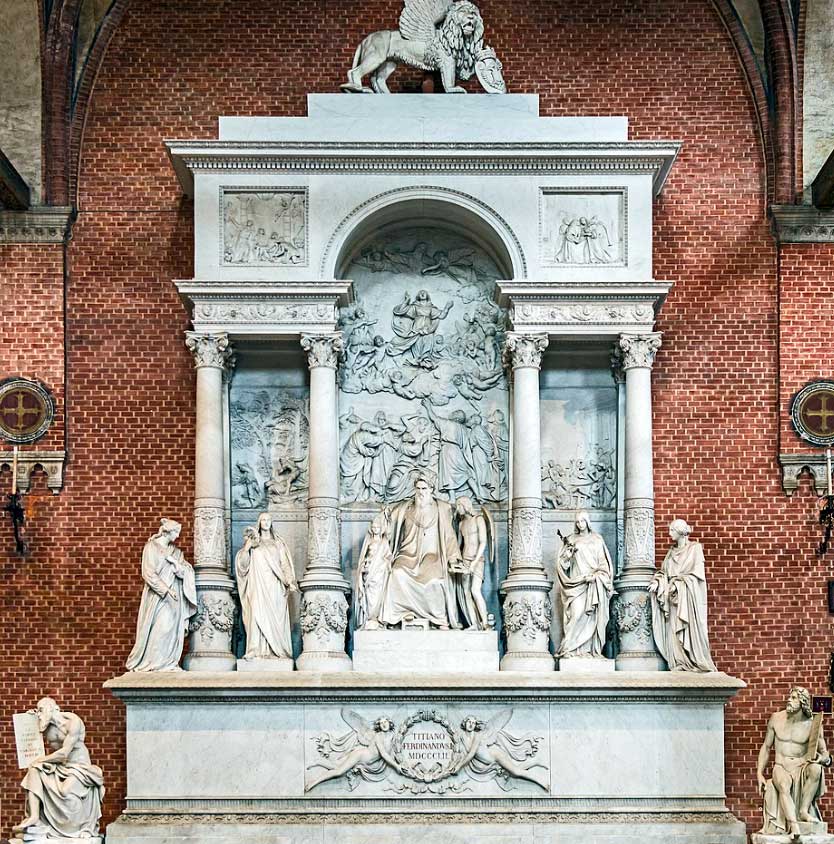
François-René de Chateaubriand, il celebre scrittore e diplomatico francese, non era solo un maestro della penna ma anche un viaggiatore instancabile. Tra le sue avventure, le visite a Venezia occupano un posto speciale, non tanto per la loro importanza storica quanto per le situazioni comiche che ne scaturirono. Immaginate un uomo del XIX secolo, con tutte le sue manie e le sue aspettative, che si trova catapultato in una città che sembra sfidare ogni logica e gravità.
Chateaubriand arrivò a Venezia il 23 luglio, dopo un viaggio che lo aveva portato attraverso le monotone paludi del Nord Italia. La sua prima impressione della città fu tutt’altro che romantica. “Una città contro natura,” scrisse, “non si può fare un passo senza dover salire su una barca”. Immaginate lo scrittore, con il suo abbigliamento
elegante e il suo portamento aristocratico, mentre cerca di mantenere l’equilibrio su una gondola oscillante, con il rischio costante di finire nelle acque verdi della laguna.
Durante i suoi cinque giorni a Venezia, Chateaubriand si dedicò all’esplorazione dei tesori artistici della città. Visitò le chiese e i palazzi, ammirando i capolavori di Tintoretto, Veronese e Tiziano. Ma la sua avventura più memorabile fu la ricerca della tomba di Tiziano. Dopo aver vagato per ore in una chiesa abbandonata, finalmente trovò la tomba del grande pittore, nascosta in un angolo dimenticato. “Ho avuto più difficoltà a trovare la tomba di Tiziano che a scrivere un capitolo del mio libro,” commentò ironicamente.

Chateaubriand non era solo un turista qualunque. Durante una delle sue visite, fu presentato alla Contessa Albrizzi, una figura influente della società veneziana.
L’incontro, però, non fu privo di imbarazzi. Lo scrittore, noto per la sua eloquenza, si trovò improvvisamente a corto di parole di fronte alla contessa, balbettando complimenti in un misto di francese e italiano che fece sorridere tutti i presenti 3 .
La sua partenza da Venezia fu altrettanto avventurosa. Chateaubriand decise di lasciare la città di notte, imbarcandosi alle dieci di sera. Il vento soffiava forte, ma non abbastanza da disturbare il mare. Mentre la barca si allontanava, lo scrittore osservava le luci di Venezia scomparire all’orizzonte, con un misto di sollievo e nostalgia. “Addio,
Venezia,” pensò, “mi hai messo alla prova, ma ti ricorderò sempre con un sorriso” 2 .
Le visite di Chateaubriand a Venezia furono un mix di meraviglia e comicità. La città, con le sue strade d’acqua e i suoi tesori nascosti, mise alla prova lo spirito avventuroso dello scrittore, regalando a noi posteri aneddoti che ancora oggi strappano un sorriso. E così, tra gondole oscillanti e tombe nascoste, Chateaubriand ci ha lasciato un racconto di viaggio che è tanto divertente quanto affascinante.
Dottore Jacques Labescat

François-René de Chateaubriand, le célèbre écrivain et diplomate français, n’était pas seulement un maître de la plume mais aussi un voyageur infatigable. Parmi ses aventures, ses visites à Venise occupent une place spéciale, non pas tant pour leur importance historique que pour les situations comiques qui en résultèrent. Imaginez un homme du XIXe siècle, avec toutes ses manies et ses attentes, projeté dans une ville qui semble défier toute logique et gravité.
Chateaubriand arriva à Venise le 23 juillet, après un voyage à travers les monotones marais du nord de l’Italie. Sa première impression de la ville fut tout sauf romantique. “Une ville contre nature”, écrivit-il, “on ne peut pas faire un pas sans devoir monter sur une barque.” Imaginez l’écrivain, avec son élégant habillement et son port aristocratique, essayant de maintenir son équilibre sur une gondole oscillante, risquant à tout moment de finir dans les eaux vertes de la lagune.
Durant ses cinq jours à Venise, Chateaubriand se consacra à l’exploration des trésors artistiques de la ville. Il visita les églises et les palais, admirant les chefs-d’œuvre de Tintoret, Véronèse et Titien. Mais son aventure la plus mémorable fut la recherche de la tombe de Titien. Après avoir erré pendant des heures dans une église abandonnée, il finit par trouver la tombe du grand peintre, cachée dans un coin oublié. “J’ai eu plus de mal à trouver la tombe de Titien qu’à écrire un chapitre de mon livre”, commenta-t-il ironiquement.

Chateaubriand n’était pas un simple touriste. Lors de l’une de ses visites, il fut présenté à la comtesse Albrizzi, une figure influente de la société vénitienne. Mais la rencontre ne fut pas sans embarras. L’écrivain, connu pour son éloquence, se trouva soudain à court de mots devant la comtesse, bafouillant des compliments dans un mélange de français et d’italien qui fit sourire tous les présents.
Son départ de Venise fut tout aussi aventureux. Chateaubriand décida de quitter la ville de nuit, embarquant à dix heures du soir. Le vent soufflait fort, mais pas assez pour troubler la mer. Tandis que la barque s’éloignait, l’écrivain regardait les lumières de Venise disparaître à l’horizon, avec un mélange de soulagement et de nostalgie. “Adieu, Venise”, pensa-t-il, “tu m’as mis à l’épreuve, mais je te garderai toujours en mémoire avec un sourire”.
Les visites de Chateaubriand à Venise furent un mélange de merveille et de comédie. La ville, avec ses rues d’eau et ses trésors cachés, mit à l’épreuve l’esprit aventureux de l’écrivain, nous laissant des anecdotes qui, encore aujourd’hui, nous arrachent un sourire. Et ainsi, entre gondoles vacillantes et tombes cachées, Chateaubriand nous a légué un récit de voyage à la fois amusant et fascinant.inglese preferito.
Dottore Jacques Labescat

François-René de Chateaubriand, the famous French writer and diplomat, was not only a master of the pen but also an indefatigable traveler. Among his many adventures, his visits to Venice hold a special place—not so much for their historical importance as for the comic situations that resulted. Imagine a 19th-century gentleman, with all his quirks and expectations, thrown into a city that seems to defy all logic and gravity.
Chateaubriand arrived in Venice on July 23, after traveling through the monotonous marshes of northern Italy. His first impression of the city was anything but romantic. “An unnatural city,” he wrote, “one cannot take a single step without having to board a boat.” Picture the writer, dressed in elegant attire and bearing an aristocratic posture, trying to keep his balance on a swaying gondola, at constant risk of plunging into the green waters of the lagoon.
During his five days in Venice, Chateaubriand dedicated himself to exploring the city’s artistic treasures. He visited churches and palaces, admiring the masterpieces of Tintoretto, Veronese, and Titian. But his most memorable adventure was the search for Titian’s tomb. After wandering for hours in an abandoned church, he finally found the great painter’s resting place, hidden in a forgotten corner. “It was harder to find Titian’s tomb than to write a chapter of my book,” he commented wryly.

Chateaubriand was no mere tourist. During one of his visits, he was introduced to Countess Albrizzi, a prominent figure in Venetian society. But the meeting was not without embarrassment. The writer, known for his eloquence, suddenly found himself at a loss for words in front of the countess, stammering compliments in a mixture of French and Italian that made everyone around smile.
His departure from Venice was just as adventurous. Chateaubriand chose to leave the city at night, setting off at ten in the evening. The wind blew strong, but not enough to stir the sea. As the boat drifted away, the writer watched the lights of Venice disappear on the horizon, with a mixture of relief and nostalgia. “Farewell, Venice,” he thought, “you tested me, but I will always remember you with a smile.”
Chateaubriand’s visits to Venice were a blend of wonder and comedy. The city, with its watery streets and hidden treasures, tested the writer’s adventurous spirit, leaving us with anecdotes that still bring a smile today. And so, among wobbling gondolas and hidden tombs, Chateaubriand bequeathed us a travel tale that is both amusing and fascinating.
Dottore Jacques Labescat